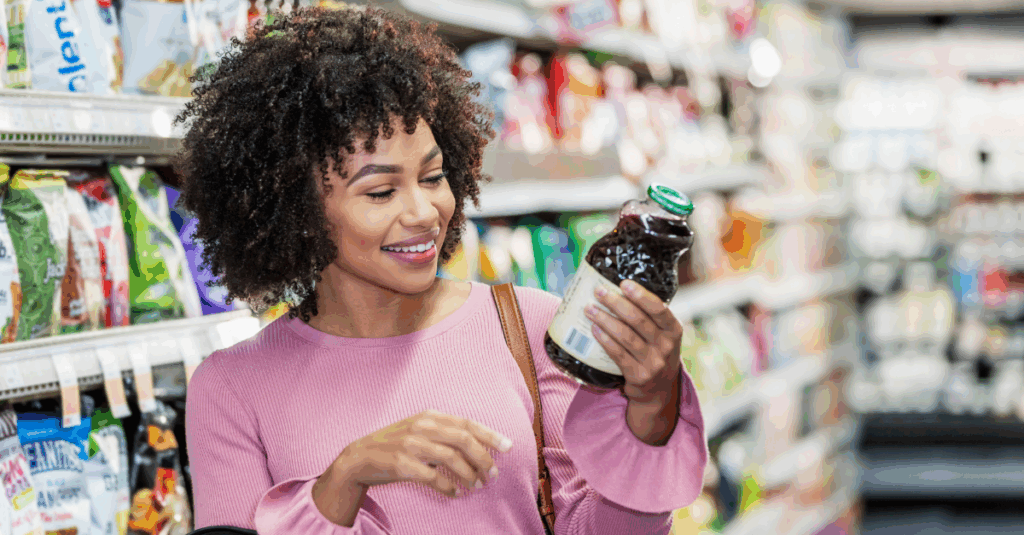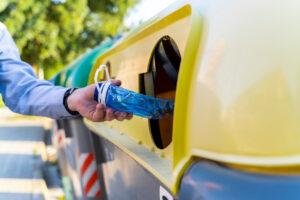
Memo
“Radical Transparency”: A Good Old Idea
MEMORANDUM
To: Interested Parties
From: Consumer Brands Association
Re: “Radical Transparency”: A Good Old Idea
Date: May 21, 2025
We’ve all heard the Trump Administration’s call for “radical transparency” as part of the Make America Healthy Again agenda. What you might not have heard is that the consumer packaged goods (CPG) industry has been putting the transparency into “radical transparency” for decades.
Arming consumers with the facts they need to make informed decisions about the food, beverage, household and personal care products they choose for their families is a long-time, ongoing priority for the makers of America’s most trusted household brands. We even have a solution for the ever-growing list of information that consumers want, it’s called SmartLabel. With a quick scan of a QR code consumers have more information at their fingertips. In fact, SmartLabel has been in use for a decade, because for us, transparency is not only essential to our mission — it is fundamental to our success.
As the largest U.S. manufacturing sector supporting 22 million good-paying American jobs, our industry stands ready to work with the administration to advance our shared goals. To that end, in addition to maintaining our long-standing commitment to transparency and strengthening our existing programs, we are undertaking new initiatives that further increase access to the information consumers need about the products they use every day.
But before we announce what’s next, let’s briefly go back in time to show you where we’ve been.
A Long-Standing Commitment to Transparency
For generations, the CPG industry has listened closely to consumers and worked to meet them where they are. Providing the American people with the information they need to make the right decisions for themselves and their families is not only good for the health of our country, it’s also good for American jobs, companies and the entire U.S. economy.
More than four decades ago — in the 1980s and 1990s — Ronald Reagan was president; shoulder pads and parachute pants were in; and Joanie loved Chachi. Importantly, it also marked a growing demand from consumers who wanted more information about what’s in their products. So, CPG companies did what they do best: listened to the consumer. The industry moved quickly to collaborate with the FDA to provide nutrition facts and more detailed information about product ingredients on the nutrition facts panel.
Then, in 2012, consumers asked the industry to provide more information, and make it simple. Once again, the industry responded by launching Facts up Front™. This voluntary, industry-led initiative summarizes important nutrition facts from the Nutrition Facts label in an easily digestible format on the front of food and beverage packaging. Some labels may also provide information about other nutrients to encourage, like dietary fiber and calcium, helping consumers quickly identify and compare the nutrients in products. The food industry has worked in partnership with the FDA for more than a decade to improve the accessibility of critical nutrition facts, promoting nutrition literacy and meeting unique dietary goals. Recent research is a testament to the success of our work, with the International Food Information Council (IFIC) finding:
- The healthiest front of package label is chosen by consumers when it includes calories, dietary fiber, added sugars, saturated fat and sodium.
- The Facts up Front™ labeling system is effective in guiding consumers toward healthier choices.
- Callouts of nutrients of interest have a greater effect on consumers choosing healthier options verses using a general “healthy” symbol on the front of package.
- Front of Pack labels with data – like Facts up Front™ — were considered more trustworthy with higher levels of satisfaction when compared to interpretive labels.
But wait, there’s more.
In 2015, the industry responded to consumer requests for more long-form product information and introduced SmartLabel. This digital tool connects consumers with more than 100,000 food, beverage, personal care, household, pet care, dietary supplement and OTC products, empowering consumers to do a deep dive into everything from ingredient definitions to package recycling instructions.
Where We’re Going — “Radical Transparency” in Action
Today, the CPG industry is continuing to lead the way to help ensure every consumer has the information they want and need to make informed purchasing decisions about what they put in and on their bodies and use in their homes. Below we outline three key opportunities and suggest new ways we can collaborate with stakeholders to identify and pursue solutions.
Increase Awareness of Consumer Transparency Tool:
Consumers can’t use a tool if they don’t know it exists. SmartLabel is accessed by consumers more than 22 million times each year, and 94% of consumers who have used it, have used it more than once. To further increase awareness of SmartLabel, Consumer Brands will continue to grow and promote SmartLabel by educating consumers on the wealth of information that lives behind the QR codes found on the products they use every day.
Health and Human Services (HHS) Secretary Robert F. Kennedy Jr. has publicly encouraged consumers to use scanning apps to procure detailed product information. SmartLabel is a powerful, market-ready tool that gives consumers that exact information via an easy-to-use QR code (no downloading required!). And unlike other product information apps, product data in SmartLabel comes directly from each brand owner so it is accurate and can be trusted — and best of all, it’s free of charge. We encourage the secretary to publicly endorse SmartLabel and champion manufacturers and retailers to use it as a mechanism to achieve “radical” consumer transparency.
New Consumer Resources:
With endless inundation of all types of information, helping consumers cut through the noise and access the facts is fundamental to empowering consumer transparency. A project of Consumer Brands, the Food Processing Facts website was launched in 2024 as a digital resource for fact-based information and resources about food processing and the many benefits it plays to ensure food safety, improve nutrition security and reduce food loss and waste. Today, we have added an ingredients page to the site, delivering objective information about the ingredients found in the everyday products consumers rely on and how they are used.
Looking ahead, we will continue to create and provide additional tools and resources that bring greater transparency and facts to consumers about food, beverage, household and personal care product ingredients.
Increase Transparency into Ingredient Safety Reviews:
Food and beverage companies adhere to the rigorous science and risk-based system established by the FDA that protects America’s food supply. FDA’s Generally Recognized as Safe (GRAS) process plays an important role in this proven system, enabling companies to innovate to meet consumer demand while also meeting FDA’s regulations and safety standards.
Food ingredients can be GRAS if they have a long history of safe use in food and are recognized as safe for consumption by qualified experts. GRAS substances include common food ingredients such as salt, pepper, vinegar and baking powder, as well as other ingredients being used to meet consumers’ current dietary and nutritional preferences. Even though GRAS notifications have been voluntary, the FDA maintains a list of more than 1,000 GRAS notices provided by companies.
GRAS is not a loophole for companies to sneak ingredients into the food supply. That said, can this FDA process be improved to bring greater understanding and visibility into how ingredients are evaluated for human consumption before and after entering the marketplace? Of course. And the industry is working with HHS, FDA and Congress to identify and implement solutions.
For any of this to be successful, FDA needs adequate resources. Therefore, the industry is asking Congress to support funding for FDA functions dedicated to ingredient and additive safety (pre- and post- market reviews), which fosters innovation, boosts competitiveness and strengthens domestic manufacturing.
Industry also agrees to mandatory GRAS notifications for new GRAS ingredients. All new GRAS ingredients should go through an appropriate FDA pathway before entering the market. And for existing ingredients, industry will collaborate with FDA to deliver a comprehensive list of food ingredients to bring greater transparency to consumers.
Focusing on What Works
As we explore new ways to get information to consumers, hard data — not assumptions — will continue to drive our approach. Part of empowering consumer transparency means pursuing what’s effective and dropping what isn’t.
For example, a recent Georgetown University whitepaper found that front-of-pack warning labels indicating that a product contains high levels of sugar or sodium have no proven link to lower obesity rates.
What’s Old is New Again
As the saying goes, “what’s old is new again.” It is fitting that the word “radical” — popular slang from the 1980s (along with the aforementioned shoulder pads and parachute pants) — is being used to describe what the CPG industry has been doing for decades.
Our industry has a proud tradition of American excellence and innovation. We support Americans in making shifts toward healthier dietary patterns and remain committed to enhancing product transparency, innovating to meet the demands of consumers and working with the administration to deliver safe and essential products to consumers.




